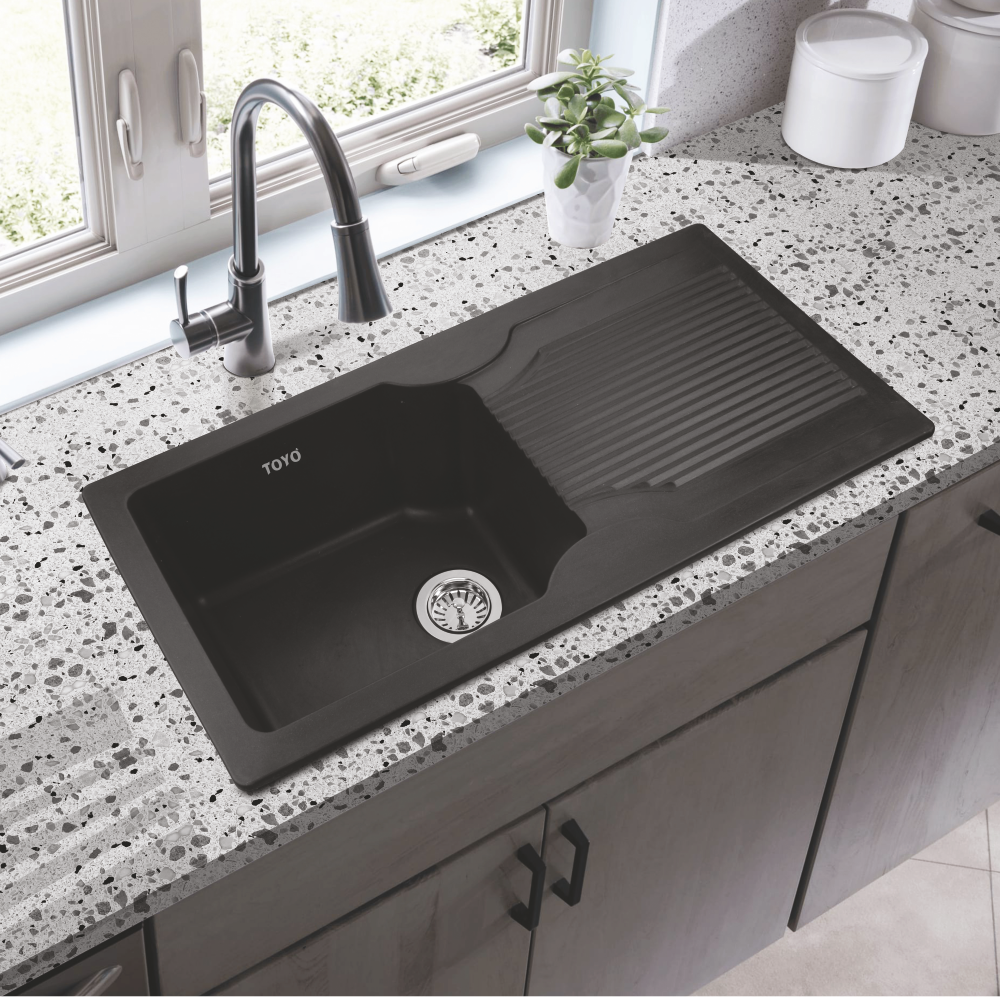
The kitchen is the most used area of every home! No matter what the event, i.e., family gathering, function, or festival, all the ladies got together there to laugh, gossip, and cook food for everyone. The main center hero here is “Kitchen Sink." A place where we all wash and rinse our utensils after a delicious meal or dining. So, why comprise this important essential of your kitchen? Let's discuss all the crucial factors you must consider while buying a new one.
Types of Kitchen Sink Design
-
Top-mount, Drop-In, or Self-Rimming Sink
Top-mount or drop-in sinks are the go-to choice for most kitchens. They are installed on the top part of the kitchen counter, and a hole is cut in the counter to fit the sink’s size. The sink is then installed with its rim resting on the counter, securely fastened with silicone. The term “self-rimming” comes from the sink’s edge, creating a rim.
-
Undermount Sink
As the name implies, undermount sinks are fixed underneath the counter and are particularly suitable for solid surfaces like stone and granite. They are also easy to clean since they lack a rim.
-
Bowl Sink
Bowl sinks are versatile as they come with two basins. This arrangement allows you to wash on one side and dry on the other, making them convenient for those who prefer hand-washing over a dishwasher.
-
Farmhouse or Apron Sink
Also known as apron sinks, farmhouse sinks are characterized by their width and an exposed front. They feature a deep bowl, making them perfect for cleaning large cookware.
Common Kitchen Sink Sizes
Kitchen sink sizes vary widely to suit different layouts, preferences, and needs. Here are some common kitchen sink sizes; let’s quickly review them;
Standard Single Bowl Sink
- Width: 25 to 30 inches
- Depth: 8 to 10 inches
- These are compact sinks suitable for smaller kitchens or as secondary sinks.
Large Single Bowl Sink
- Width: 30 to 33 inches
- Depth: 9 to 10 inches
- It provides more space for washing larger dishes and cookware.
Double Bowl Sink
- Width: 30 to 36 inches
- Depth: 8 to 10 inches for each bowl
- Offers the convenience of two separate compartments for tasks like dishwashing and food preparation.
Triple Bowl Sink
- Width: 33 to 48 inches
- Depth: Varies, typically 8 to 10 inches for the main bowls
- Ideal for those requiring extra kitchen versatility for tasks like washing, rinsing, and food prep.
Farmhouse Sink (Apron Sink)
- Width: 30 to 36 inches
- Depth: 8 to 10 inches
- These large, single-bowl sinks have an exposed front panel and ample space for washing large pots and pans.
Bar Sink
- Width: 15 to 25 inches
- Depth: 6 to 8 inches
- Designed for use in wet bars or as secondary sinks for beverage preparation and small tasks.
Corner Sink
- Width: Varies based on design, typically 33 to 36 inches along each edge.
- Depth: Similar to standard sinks
- Fits into corner cabinets to maximize counter space in L-shaped kitchens.
Inset Sink
- Width: Typically follows standard single or double bowl sink dimensions.
- Depth: Varies
- These sinks are designed to be inserted into a hole cut into the countertop, creating a clean, integrated look.
Conclusion
Remember that the kitchen sink design should complement your present layout and how you use it. Your choice of cabinet size and available space will influence the sink size that fits your kitchen best.
